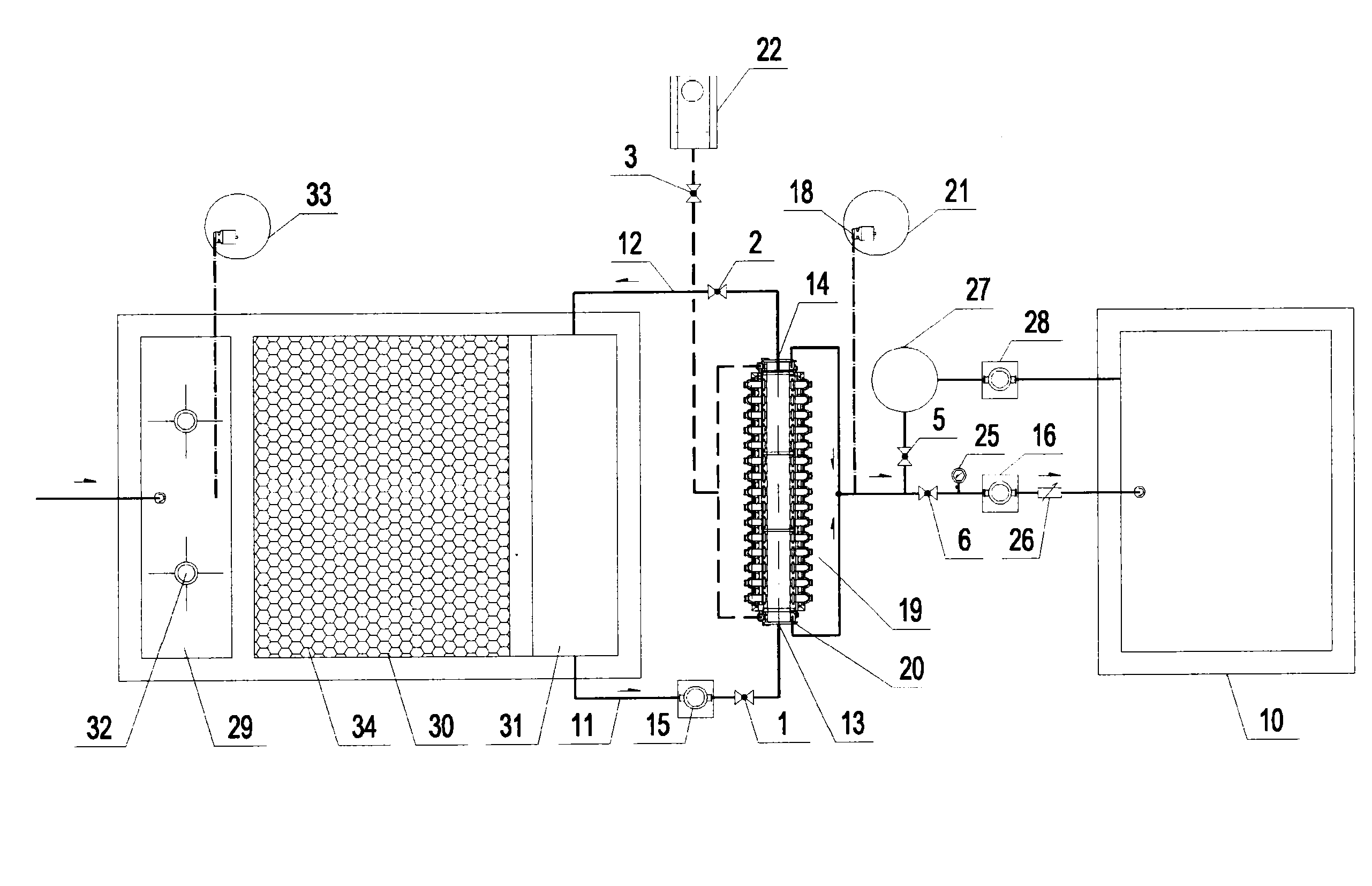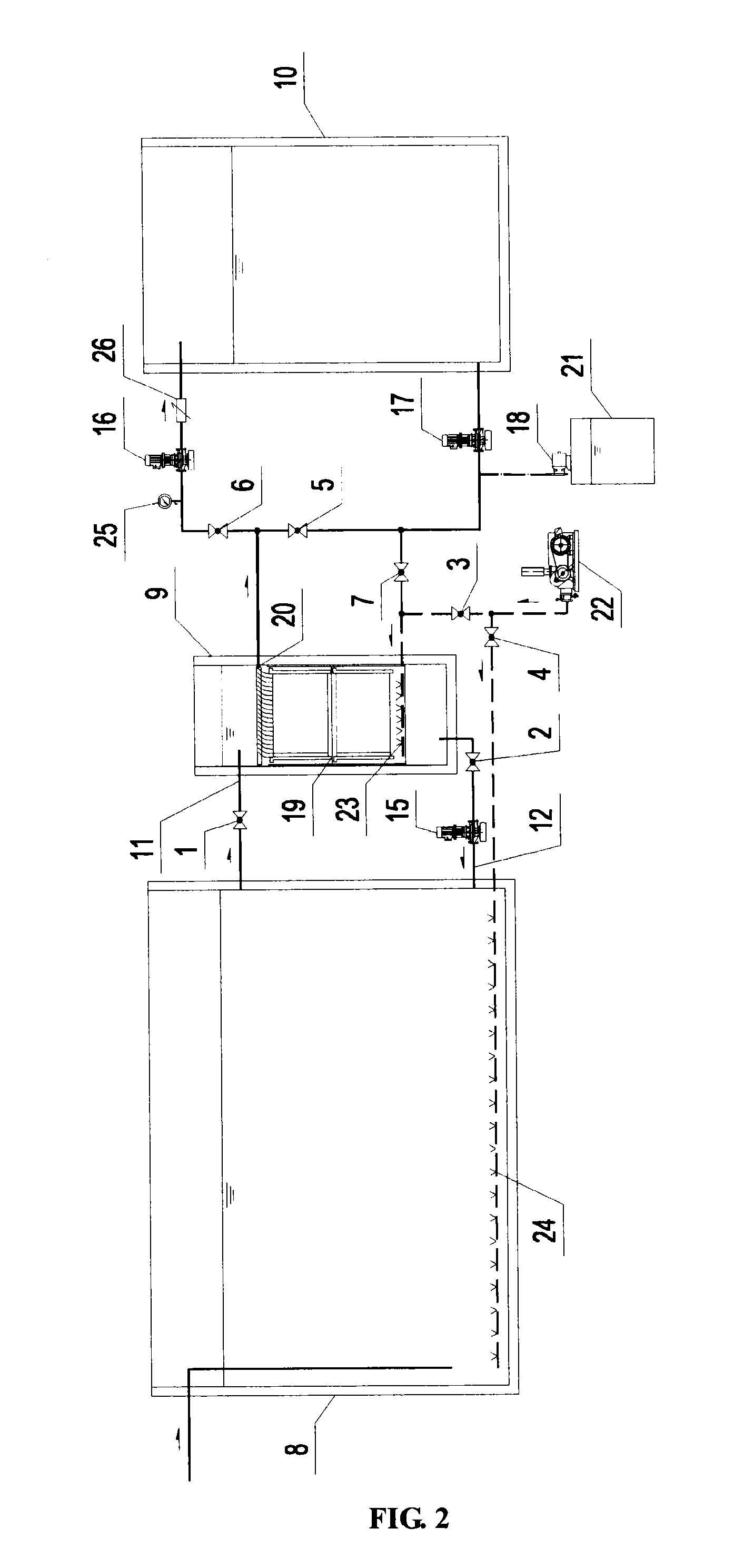Method and apparatus for cleaning a film seperating device
a separation device and film technology, applied in the direction of cleaning process and apparatus, cleaning using liquids, ultrafiltration, etc., can solve the problems of high depreciation expense, one-time investment and operating costs of membrane-based water treatment technology, and the price of membrane separation device has dropped, so as to reduce the amount of cleaning solution and chemical agent used, the effect of convenient operation
- Summary
- Abstract
- Description
- Claims
- Application Information
AI Technical Summary
Benefits of technology
Problems solved by technology
Method used
Image
Examples
first embodiment
[0099]As shown in FIG. 2 and FIG. 4, as part of a membrane bioreactor based wastewater treatment system, an apparatus for cleaning a membrane separation device includes a bioreaction tank 8; a membrane filter tank 9 independent from the bioreaction tank 8 and having a wall shared with the bioreaction tank 8; a membrane separation device 19 arranged in the membrane filter tank 9; a membrane permeating liquid tank 10 for storing membrane permeating liquid of the membrane separation device 19; a feed-liquid supplying channel 11 for transmitting activated sludge mixed liquor in the bioreaction tank 8 to the membrane filter tank 9, and a feed-liquid supplying valve 1 installed in the feed-liquid supplying channel 11, where the feed-liquid supplying channel 11 passes through the sidewall of the bioreaction tank 8 at an upper part of the sidewall with the top of the channel being 400 mm lower than the liquid level inside, and passes through the sidewall of the membrane filter tank 9 at an ...
second embodiment
THE SECOND EMBODIMENT
[0109]As shown in FIG. 3 and FIG. 5, as part of a drinking water treatment system, an apparatus for cleaning a membrane separation device includes a coagulation reaction tank 29; an inclined plate sedimentation tank 30; an intermediate water tank 31; a membrane separation device 19; a membrane permeating liquid tank 10; an stirrer 32 arranged in the coagulation reaction tank 29; an inclined plate 34 arranged in the inclined plate sedimentation tank 30; a feed-liquid supplying channel 11 for transmitting upper clear liquid in the intermediate water tank 31 to the membrane separation device 19 and a circulation pump 15 and a feed-liquid supplying valve 1 installed in the feed-liquid supplying channel 11, where the feed-liquid supplying channel 11 passes through the sidewall of the intermediate water tank 31 at a lower part of the sidewall with the top of the channel being 200 mm higher than the bottom of the tank; a feed-liquid backflow channel 12 for returning a ...
PUM
 Login to View More
Login to View More Abstract
Description
Claims
Application Information
 Login to View More
Login to View More - R&D
- Intellectual Property
- Life Sciences
- Materials
- Tech Scout
- Unparalleled Data Quality
- Higher Quality Content
- 60% Fewer Hallucinations
Browse by: Latest US Patents, China's latest patents, Technical Efficacy Thesaurus, Application Domain, Technology Topic, Popular Technical Reports.
© 2025 PatSnap. All rights reserved.Legal|Privacy policy|Modern Slavery Act Transparency Statement|Sitemap|About US| Contact US: help@patsnap.com



